Horror Costuming: The Bride of Frankenstein
 Thursday, October 26, 2023 at 9:00PM
Thursday, October 26, 2023 at 9:00PM As promised, the Horror Costuming series is back for a new spooky season, going further into the past than ever before. So much so that one delves into what now seems cliché, lest we forget that what is commonplace today was once new. There's no better example of this than the Universal Horror monsters of Hollywood's Golden Age, when studio head designer Vera West helped crystalize looks that would become classics. Think of Dracula's tuxedoed elegance with a red-lined opera cape, the Invisible Man's bandage and sunglasses combo, and, of course, the lumbering threat of Frankenstein's Monster.
Speaking of that 1931 James Whale-directed horror classic, today's topic of choice shall be its sequel. After the first movie's massive success, Universal begged the director for a follow-up, giving him unprecedented creative control. From there, we got the Genesis of the horror (tragi)comedy, a camp extravaganza like none other – 1935's The Bride of Frankenstein…
A most peculiar beginning finds the Frankenstein sequel jettisoned to a specific time and place in History rather than the Ruritanian a-temporal amalgamation of the first movie. The scene is set in what one presumes is Villa Diodati by the Lake Geneva, on a stormy night around 1816, when Lord Byron entertained the company of his friends and fellow writers, Mary and Percy Shelley. Under a canopy of thunder and downpour, they are the perfect picture of Regency regality reimagined by 1930s Hollywood. The men are fops out of a modernized fashion plate, tight pants and ruffles galore, while the mother of Frankenstein sits by the fire, a glittering vision.
It's interesting to note how Elsa Lanchester's costume suggests a higher formality than the domestic tableau necessary demands, bedecking Mary in silverwing and fairydust, a froth of tulle around her arms, puffed sleeves and antique jewelry framing her in closeup. In wide shots, the concessions made to contemporary style are made evident by the fitted torso in contradiction to the historical Empire waist – the construction of a 1930s evening gown, in other words. More interesting than its anachronism is how the outfit goes against one's gothic suppositions about the author, bedecking her in sparkle and splendor that, in black and white, feels almost bridal.
In one fell swoop and single costume piece, the budget increase between '31 and '35 becomes obvious. It's pretty impossible to imagine such an elaborate outfit, which supposedly required 17 costume makers 12 weeks to complete, within Whale's original Frankenstein. Speaking of which, as the Regency writers recall Mary Shelley's tale, the previous movie resurfaces in montage form, and the viewers are asked to reappreciate images from that picture. Immediately, the sartorial contrast shocks for how modern the figures look compared to the historical Shelleys and Byron. Indeed, when we cut back to the action and new footage, an aesthetic shift has occurred.
Sure, the men still sport 1930s jackets and the like, but there's a greater emphasis on mock-folkloric garb, some Hollywood version of East European peasantry. As the fear-mongering Minnie, Una O'Connor strikes a memorable image. Crowned with a headpiece of flower embroidery and flittering ribbon, crisscross lacing over a dark bodice, a shawl over her shoulders, and the facsimile of a ruff around her neck – this would be the basis for Cloris Leachman's parodical look in Young Frankenstein, nearly forty years later. This reinforced emphasis on old-timey costumery further underlines the contrast between our main players and the world they inhabit.
The Monster, for example, is made to stand out all the more with his early-30s boxy suit, a would-be modern man displaced from time as much as he is displaced from the natural order. The tattered outfit even conspires to disconnect the body from its coverings, tailored to look too small on Boris Karloff's body. It's a simple trick that makes him appear bigger than life. Furthermore, the makeup and costume departments have deteriorated the first film's Monster, showing a more weathered reimagining of the character, barely escaped from the mill fire that seemed to have killed him before Universal decided to franchise his fates.
When we get to her, Valeria Robson's take on Henry Frankenstein's beloved Elizabeth is another incongruence. However, her slinky fashions are modulated by details that gesture at the past through fantasy. A retinue of handmaidens with their halo-like headdress helps settle her into a contingent closer to the villagers' reality than the Monster's aberration, even if they have no period or folk basis. What's most striking about the group is how they whisper a bridal promise over the feminine figure. Forget not that, in the broken chronology of these movies, this is still supposed to be the Frankensteins' wedding night.
Later, as she nurses her beau back to health, Elizabeth keeps echoing the author and the Monster's future Bride, a sheer peignoir dotted with feathers like an all-enveloping veil, so diaphanous it looks like it could shred apart with a gust of wind. She also looks a bit like a plucked bird, maybe some fallen angel. Suitably, a shadow soon comes to dim her light in the form of Henry's colleague and mentor, the mad Doctor Pretorius. In contrast to the loving couple, the bizarre scientist is a redingoted ghoul in perfect Victorian menace. There are no vampires in the movie, but the man could pass for another blood-sucker from the Universal Horror craze.
In fact, when Pretorius uncovers his collection of miniaturized people, he even mentions how much he looks like a figure clad in what can best be described as Bela Lugosi's old Dracula costume. The mini-men scene is a circus of mismatched iconography, with a clergyman dressed like a cod Pope and a king styled as Henry VIII's homunculi twin. One can almost hear the crew's laughs throughout the scene. The costuming team, in particular, must have had a lot of fun. Beyond vampiric airs, Pretorius also exudes some profane subversions of clergywear, his dark fit and silken cap suggesting a Catholic priest with his Zuccheto, mayhap a Jewish Kippah.
That's not the only example of religious reference permeating The Bride of Frankenstein's iconic wardrobe. The blind man with whom the Monster finds a safe haven is dressed in saintly cloth, monk-like in his simplicity, and a rope tied around his waist. Later, as Henry and his mentor bring their latest creation to life, the Bride's mummy-like body has its head covered in safety pins, displayed like a circlet in a grotesque suggestion of the Christic crown of thorns. Like everything in the tale, these appropriations of spiritual iconography suggest a transgression against the cosmos' order, natural ways inverted. Not that the bandaged look is what people think about when imagining the movie's titular character in their head, the look that would inspire Halloween costumes into perpetuity.
Clad in the medical garb and rubber gloves that would later clothe Young Frankenstein and Frank N. Furter alike, the mad scientists fashion the Bride into otherworldly glamour that almost seems constructed out of medical supplies and sheets. In some horrifying way, it looks like a white shroud with a laced-up back recalling archaic body bags. The arms remain wrapped, breaking the swath of plain white of her tent-like robes, while the shoulders are even more accentuated than before. It's fascinating how she goes from an erotic mummy to this bizarre androgynous vision, hair teased into a light bolt bouffant by a Nefertiti-inspired Jack Pierce.
That master makeup artist also painted Elsa Lanchester's face to sharpen her angularity. With tricks like these costume and cosmetic touches, editing and performance, the Bride seems to move in staccato fidgets, the towering hair reverberating with each gesture while the mummified arms provide a stiffness to her gait. She's a piteous animalesque non-person, instinct above humanity, almost insectoid in her bug-eyed expression and pose, the gown enhancing every terrifying quality. It's the uncanny valley as costume design, unbound by fashion and historical references – she's primordial horror, an embodiment of wrongness, all-consuming and impossibly memorable.
In your opinion, what's the best-dressed Universal Horror classic? Do you bat for the Bride of Frankenstein or pick another flick?



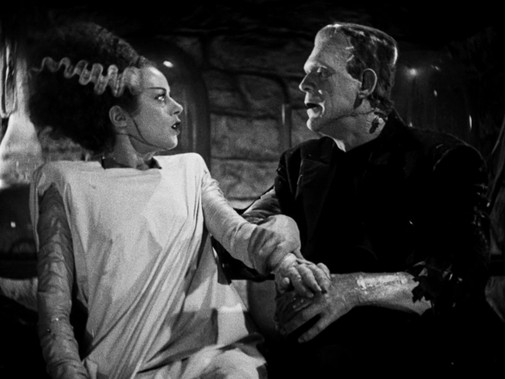
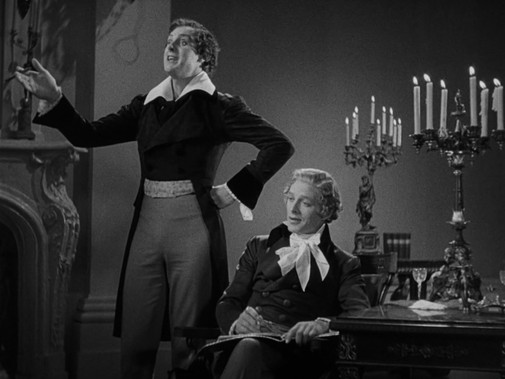
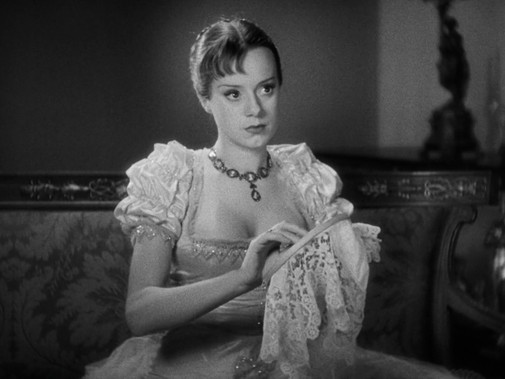
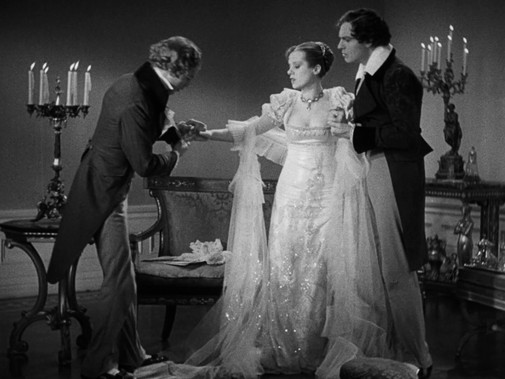
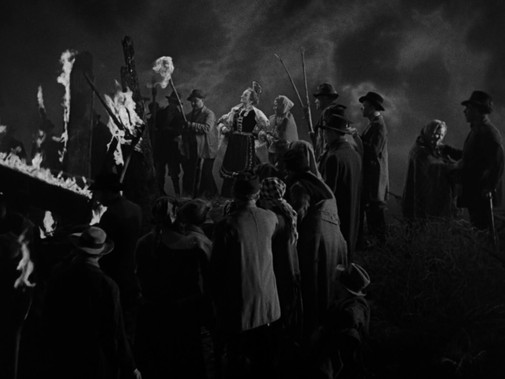
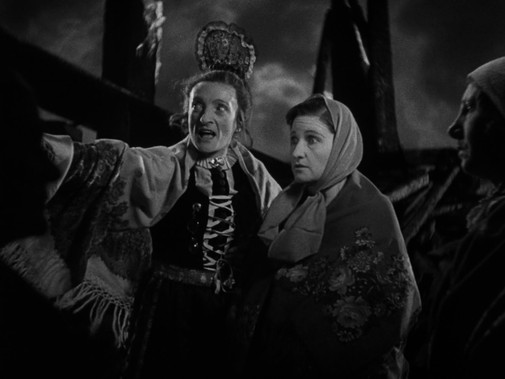
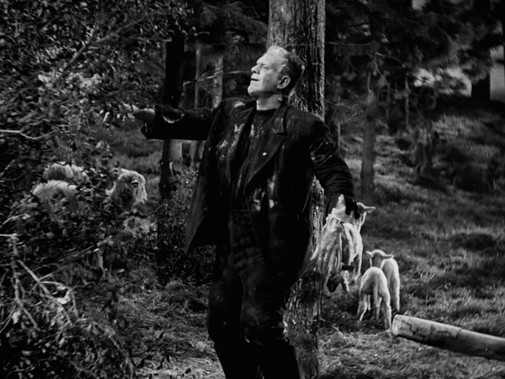
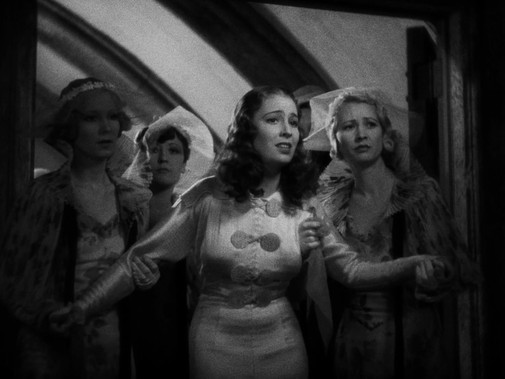
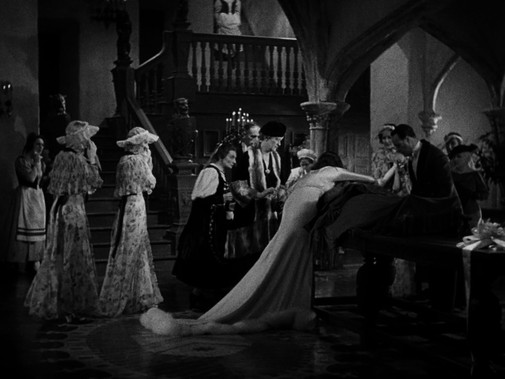
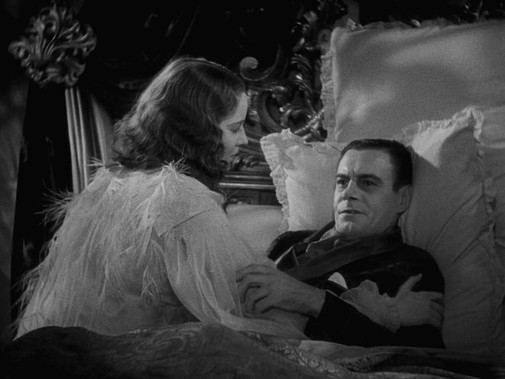
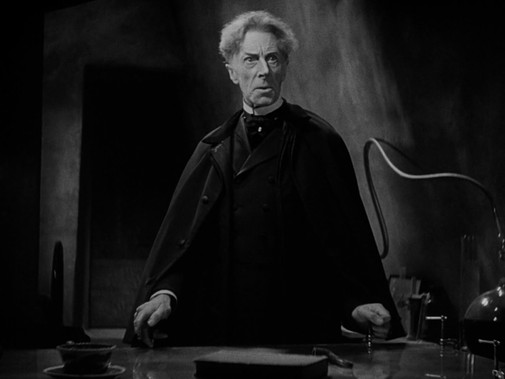
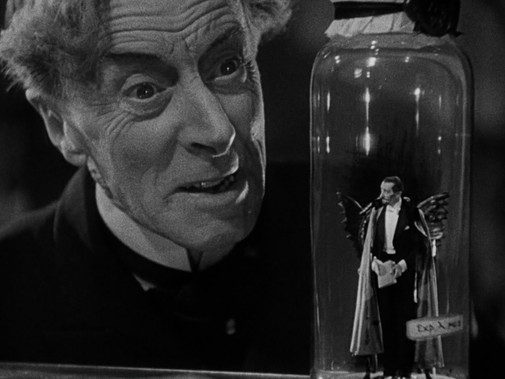
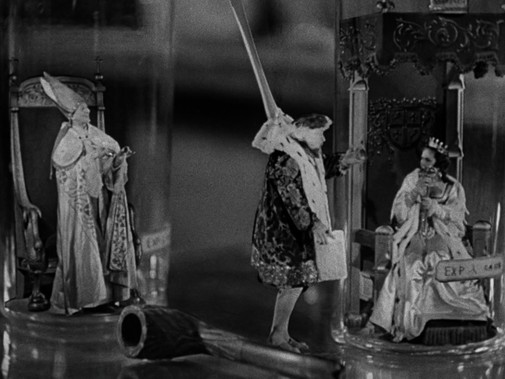
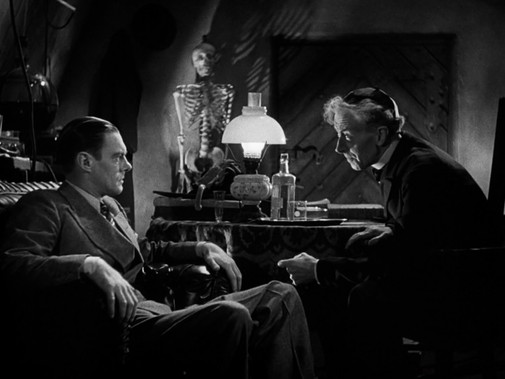
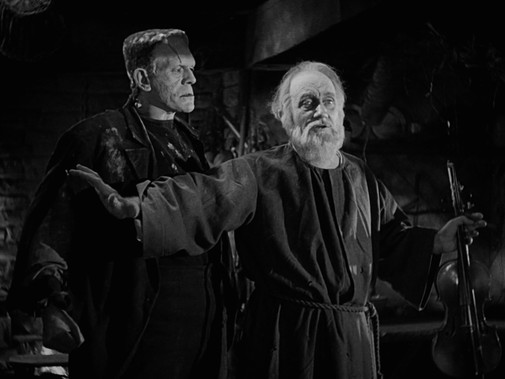
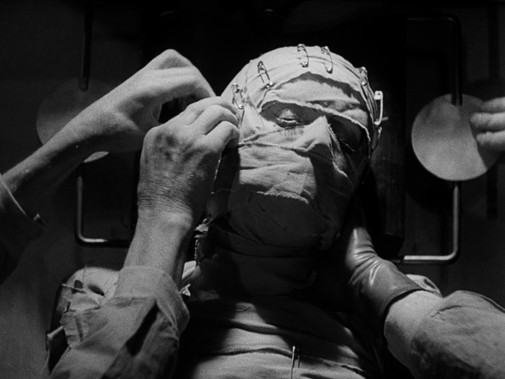
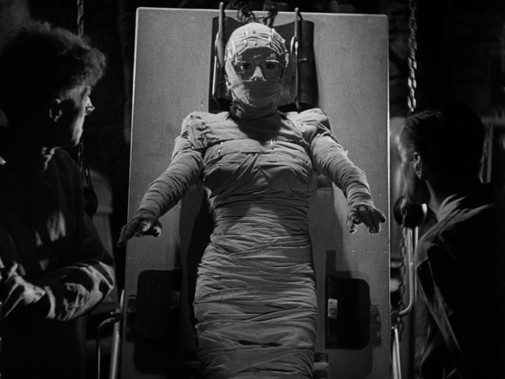
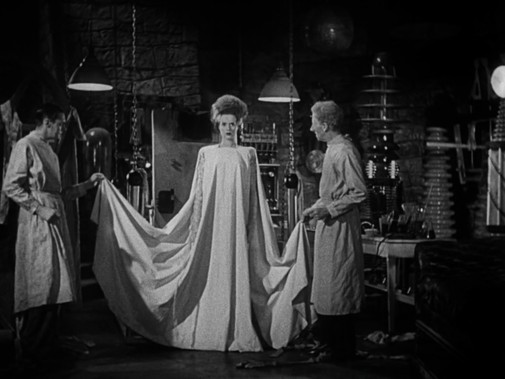
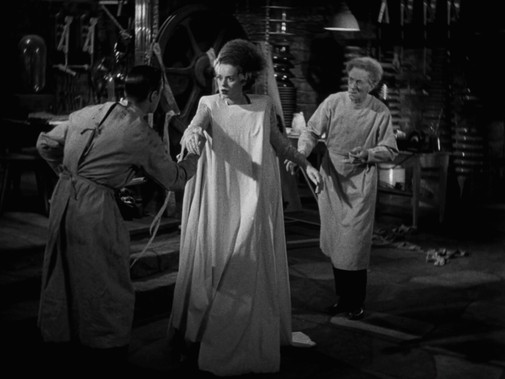
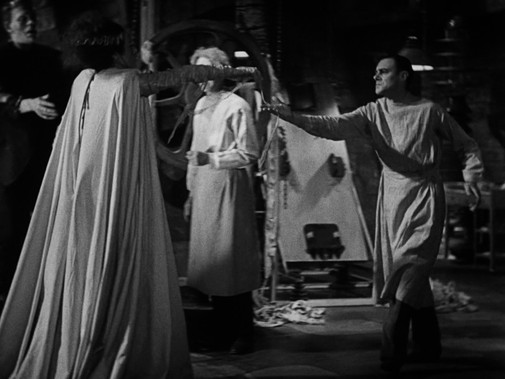
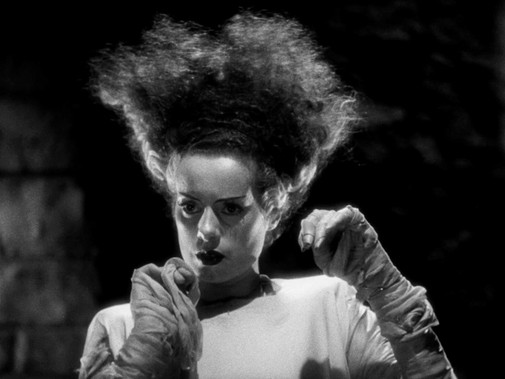
Reader Comments (2)
I kinda think this one is better than its predecessor.
The costumes here are really, really fabulous. And because I have to, my friend wrote for and edited/compiled a new monograph about Bride of Frankenstein which is a fabulous read https://emmawestwood.net/2023/07/02/get-your-copy-of-bride-of-frankenstein-book/